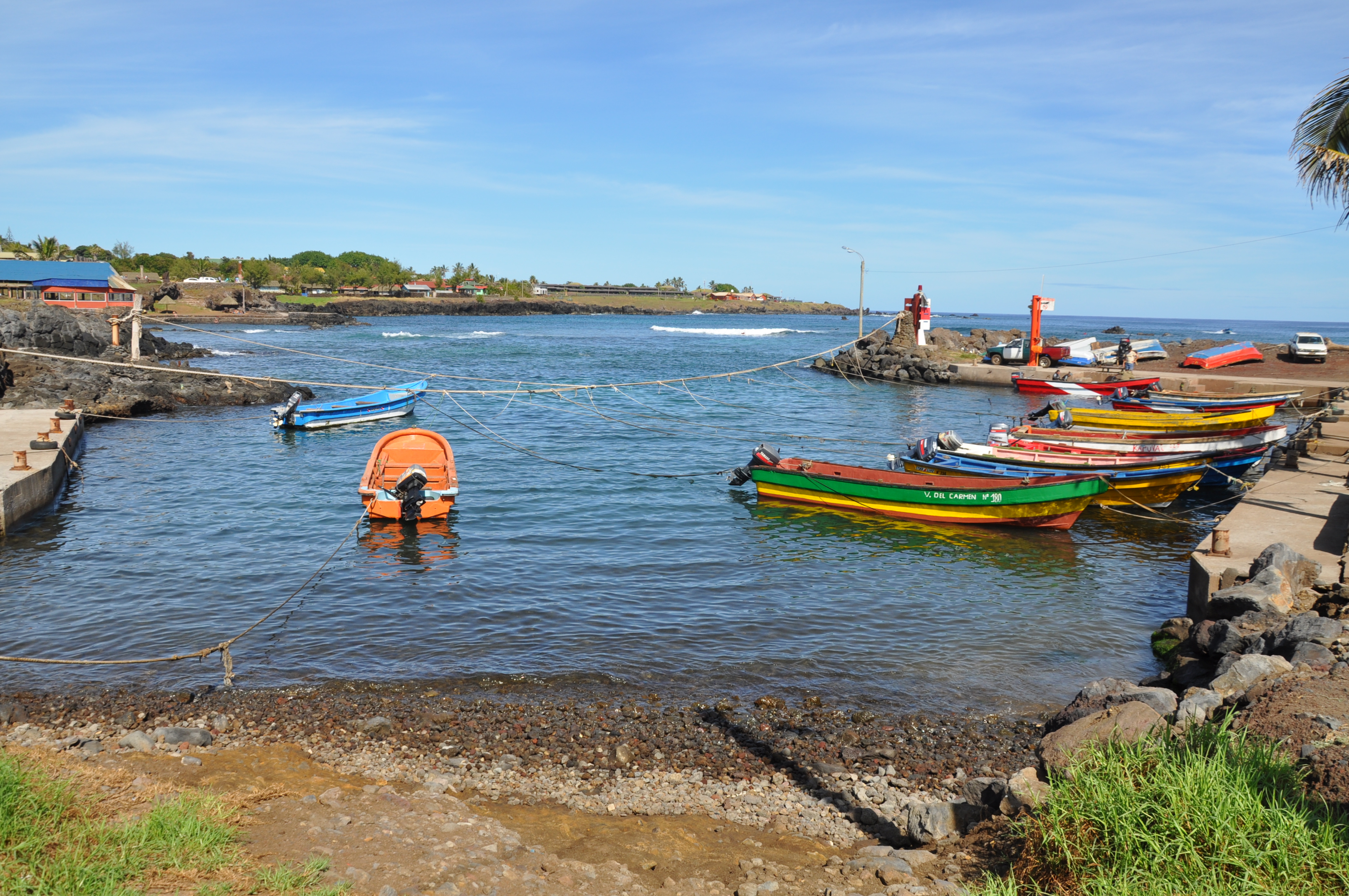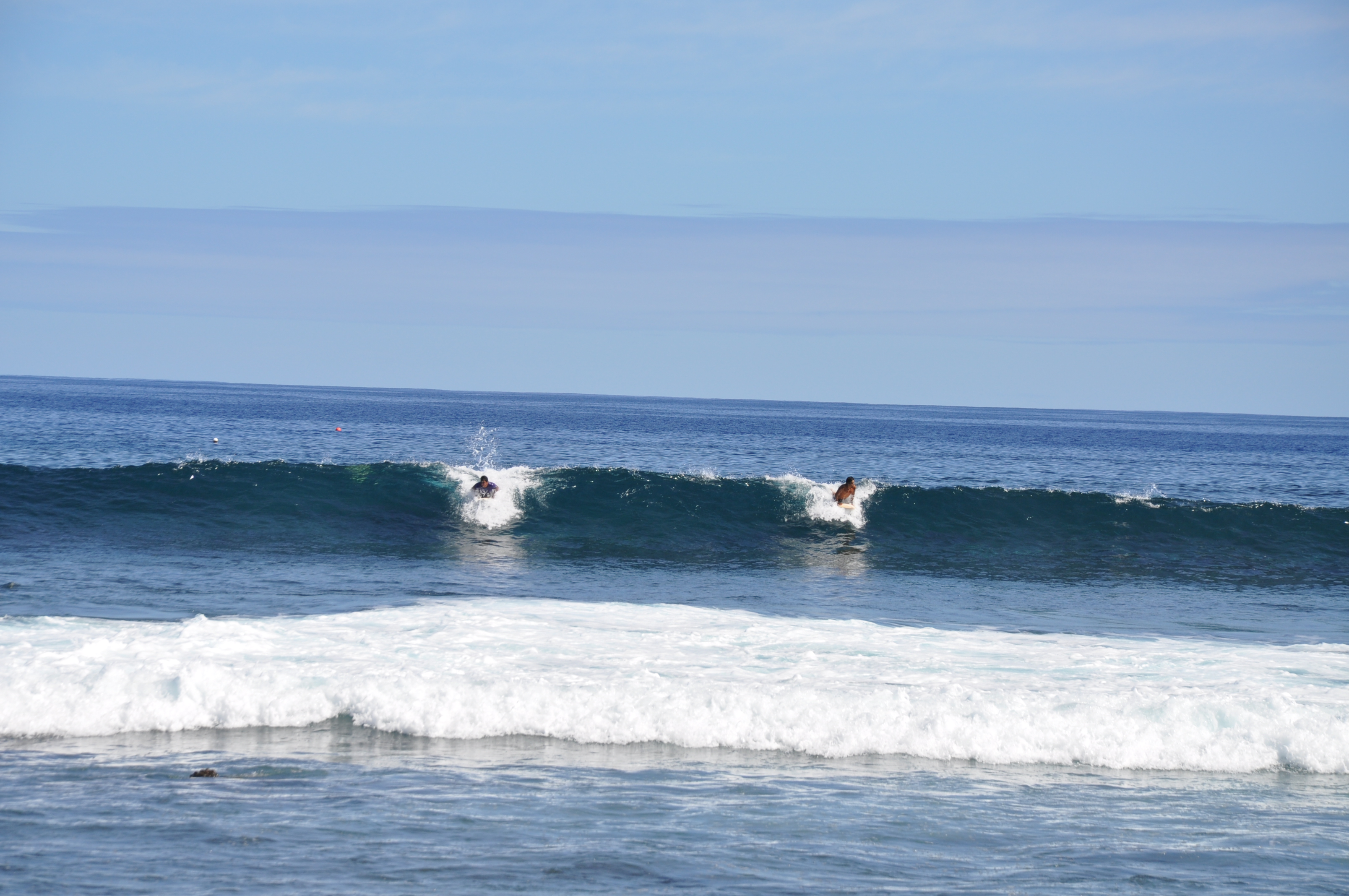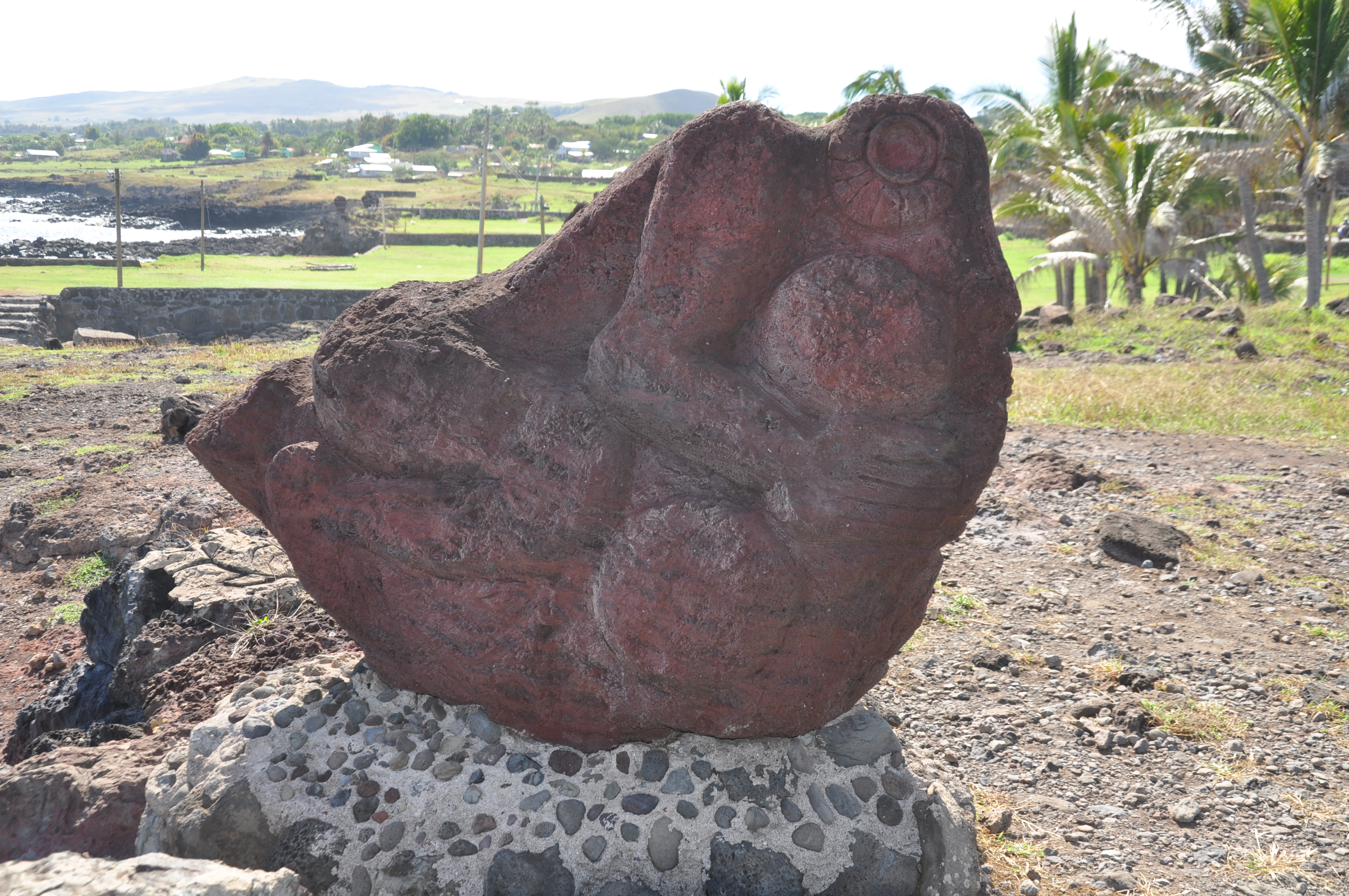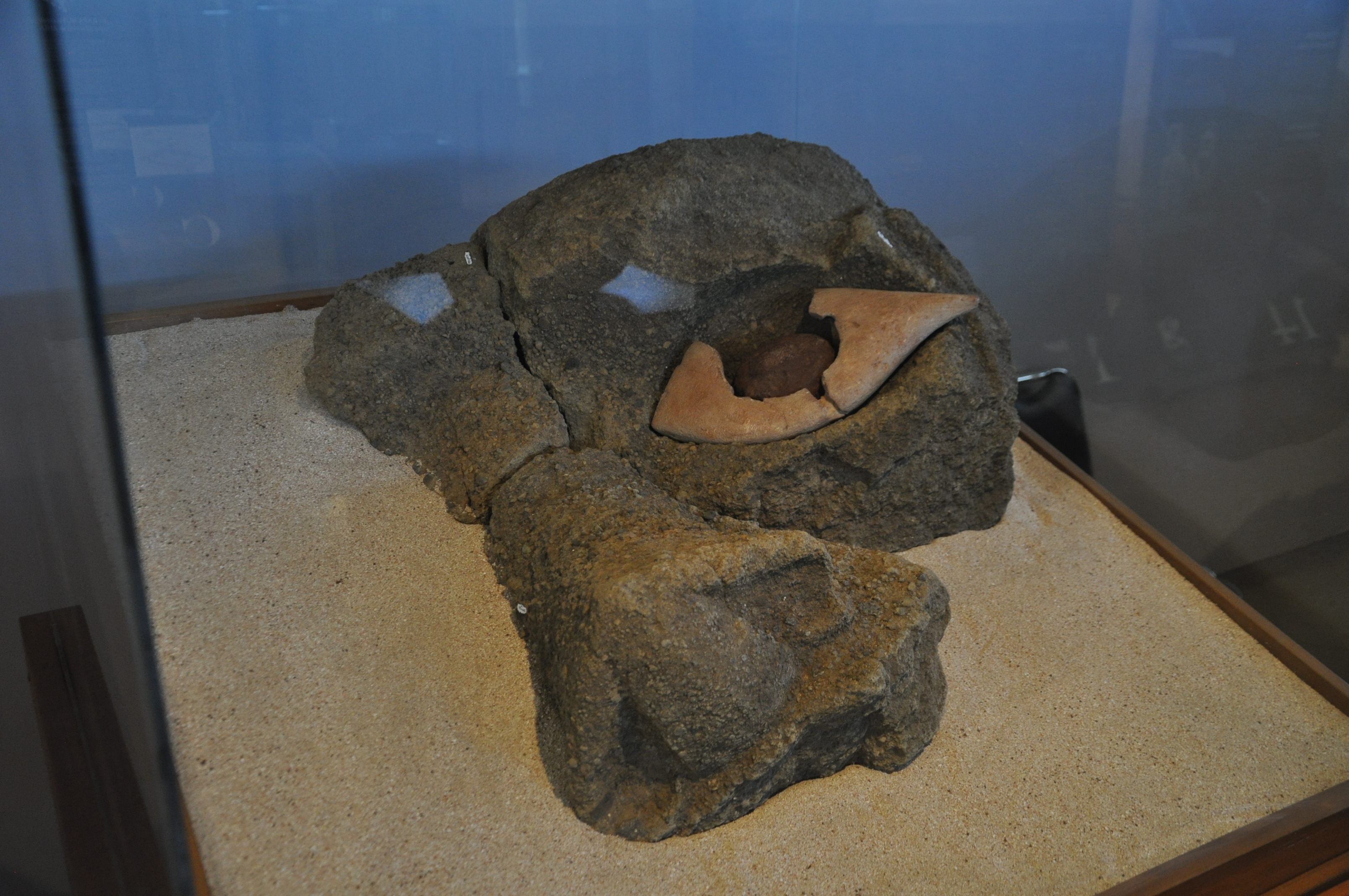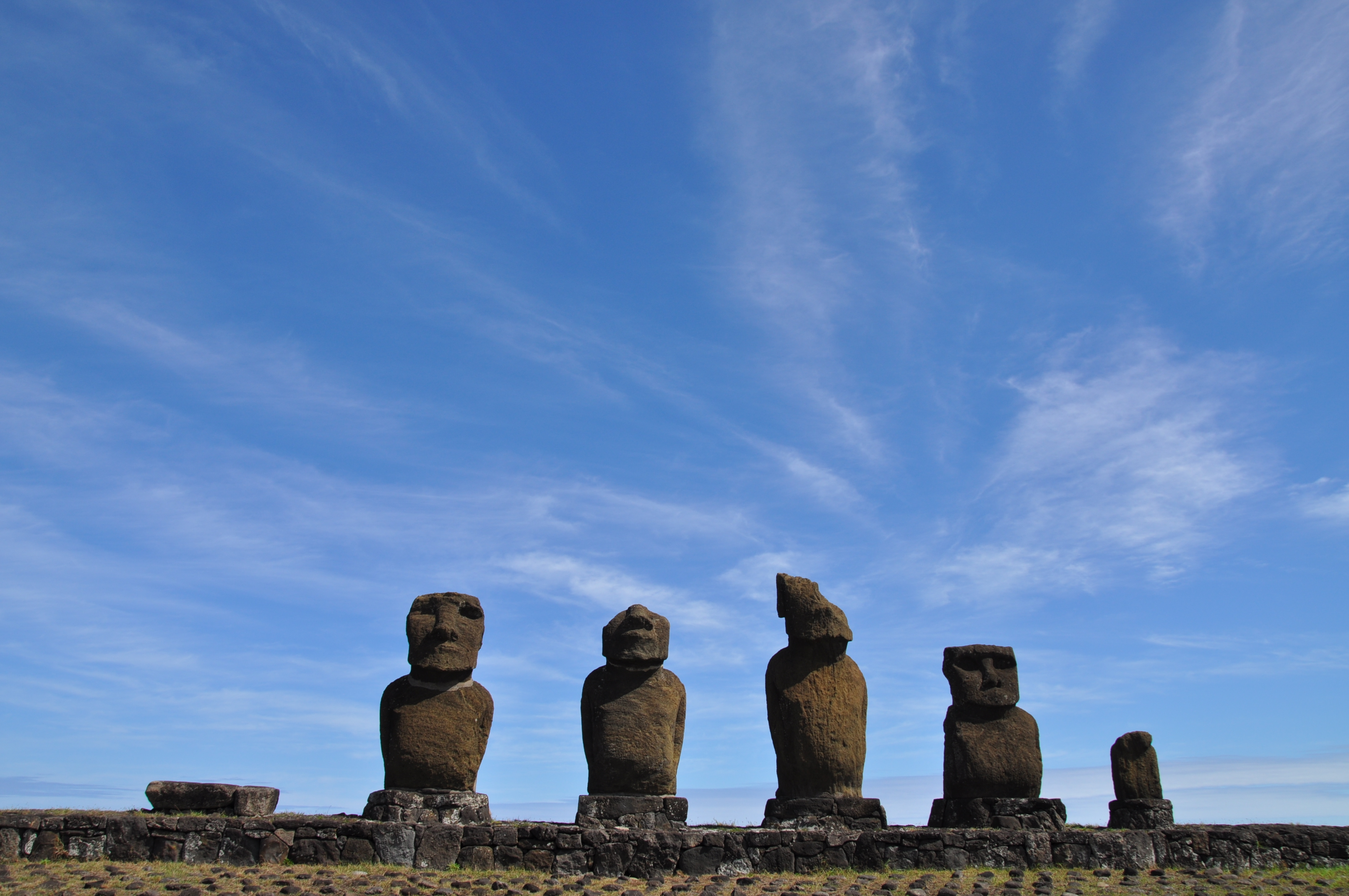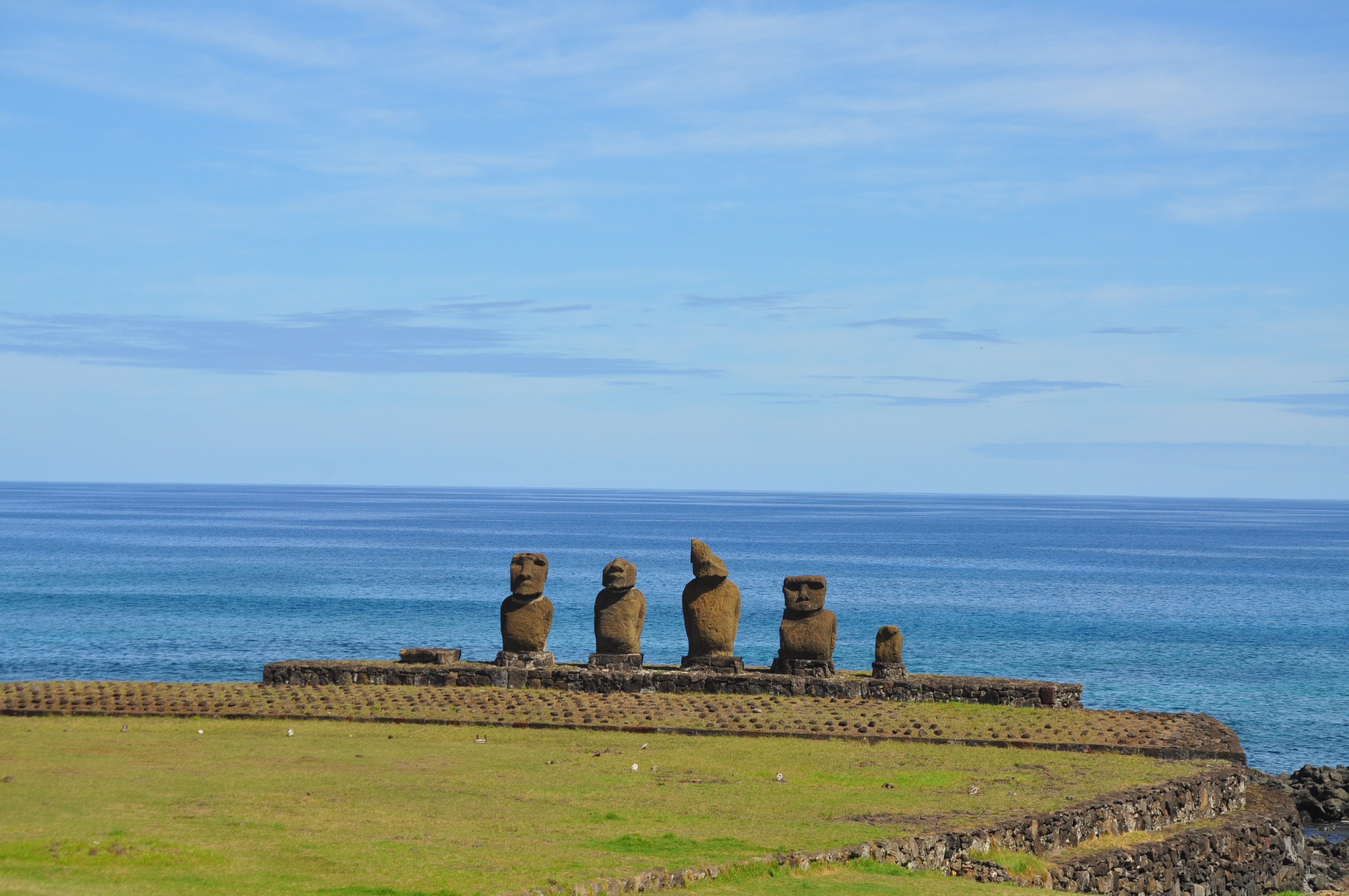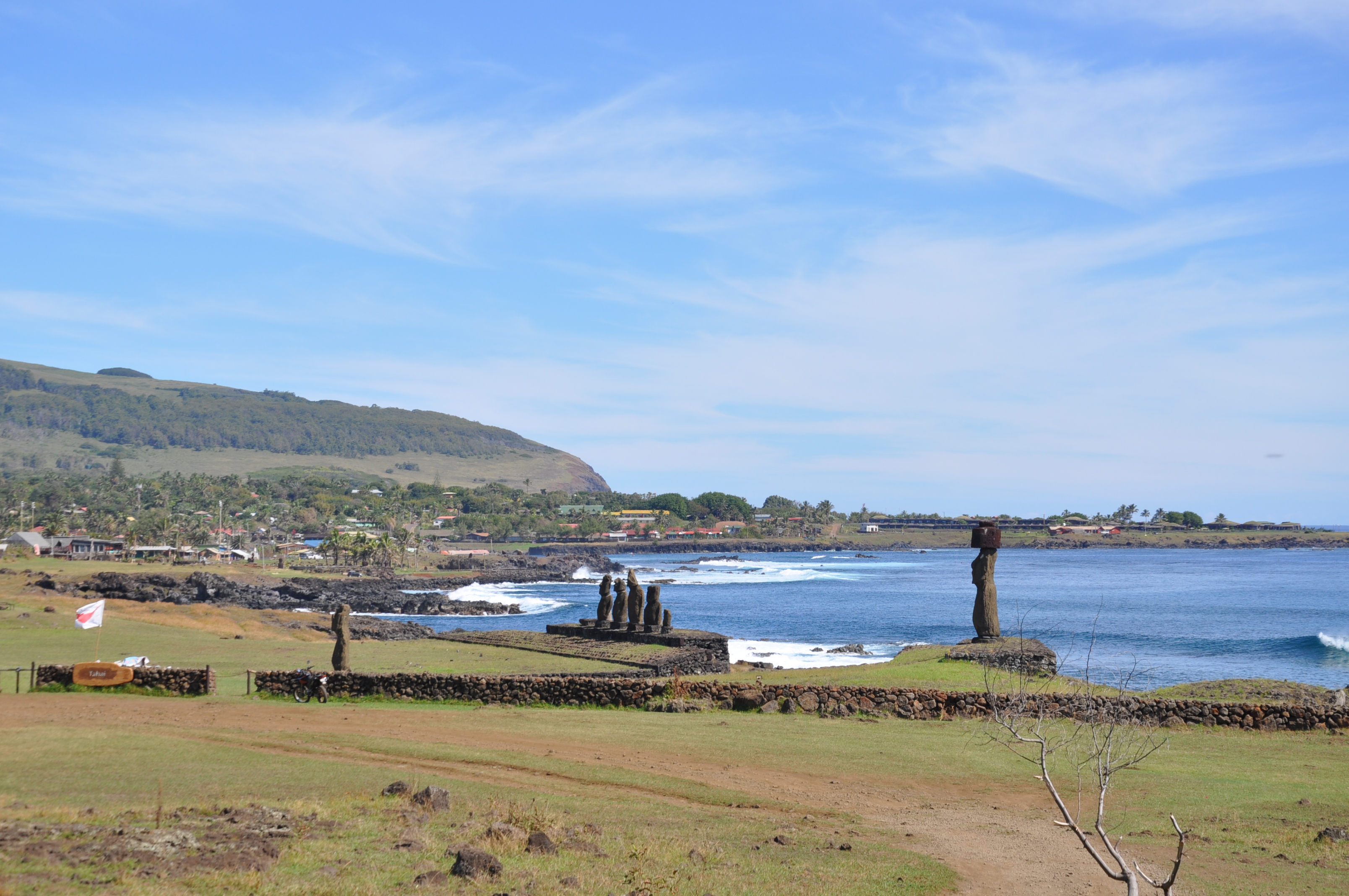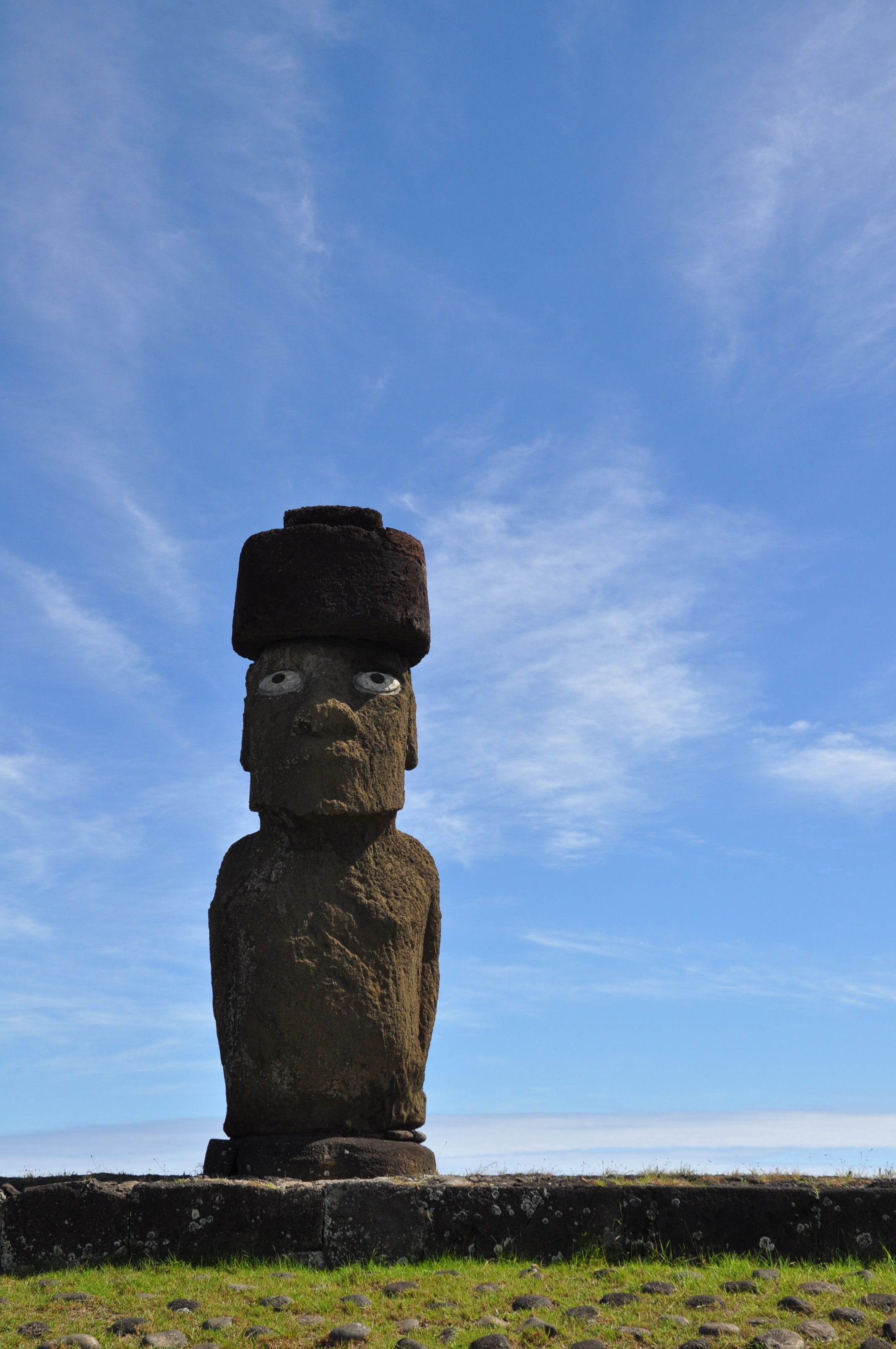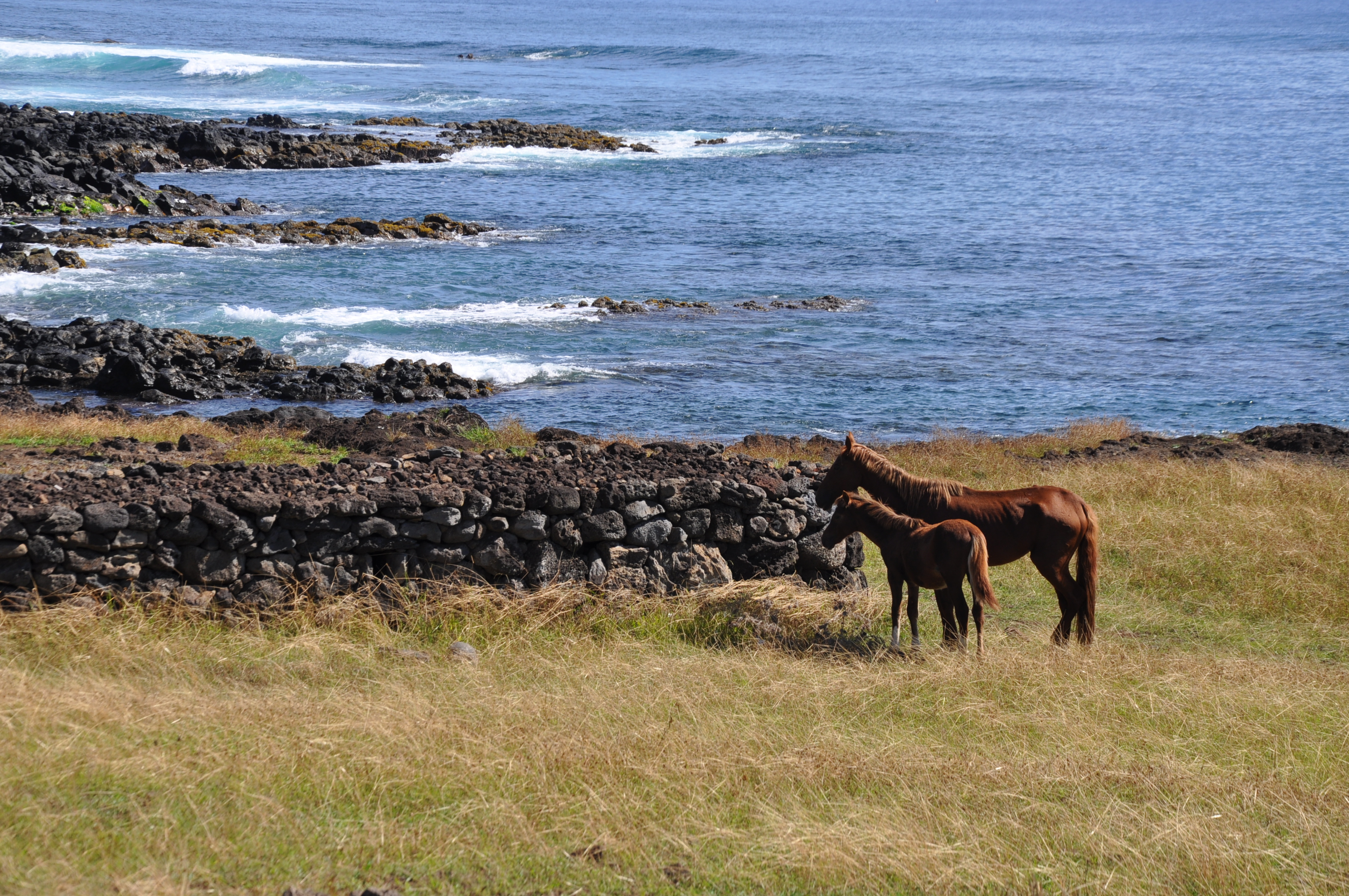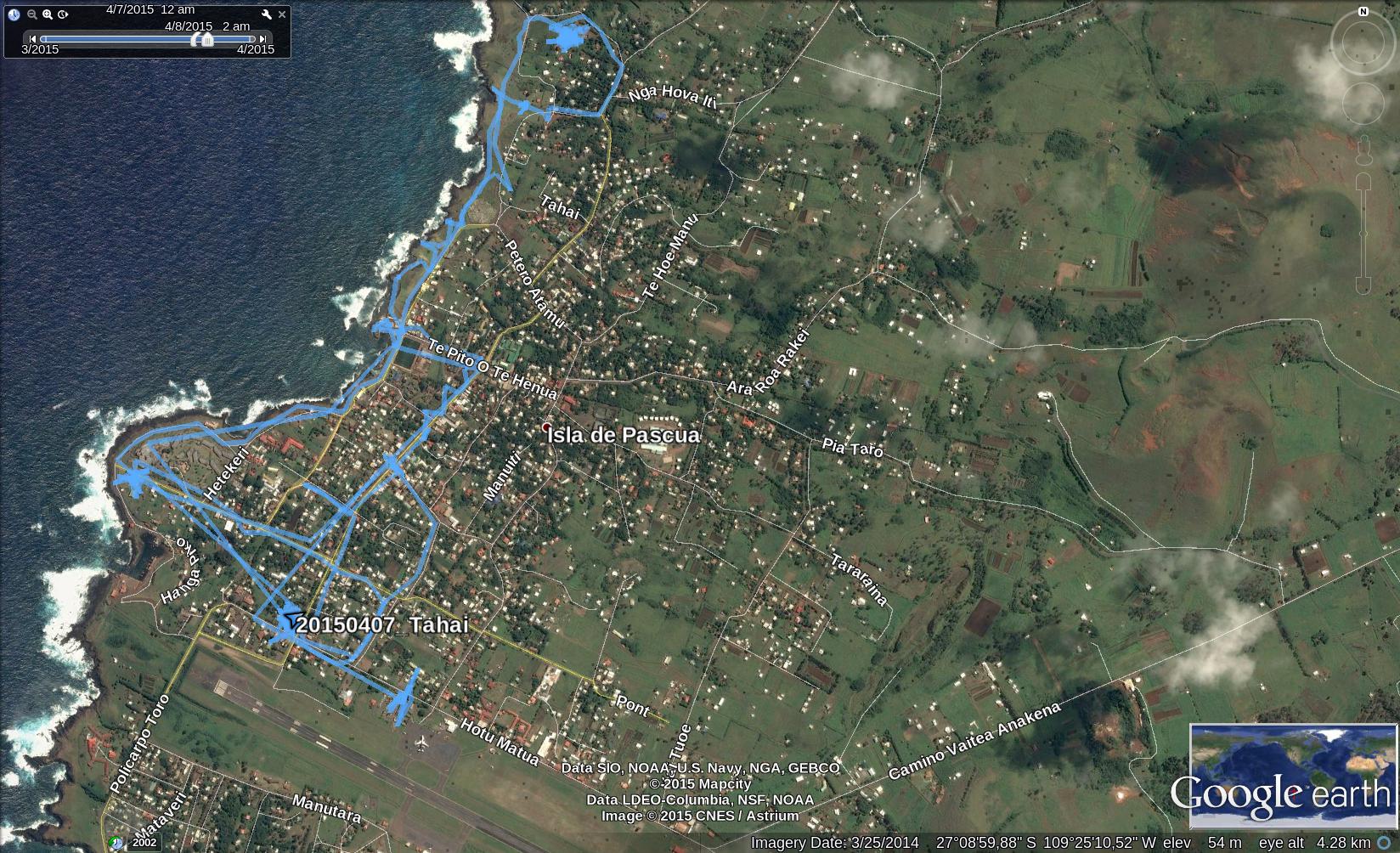I strolled around the only accumulation of streets on Easter Island, a village called Hanga Roa. I continued with a museum about Rapa Nui culture, the museum Padre Sebastian Engelbert, and finished with Tahai, a platform (Ahu) with moais.
Polynesian settled on Rapa Nui sometimes between 700-800 AD. That is disputed however as carbon dating supports a settlement as late as 1200 AD. According to legend, Hotu Matu’a landed in a double hulled canoe on Anakena beach, and his people spread out over the island from there.
The moais were build and transported to their platforms (ahu) between 1250 and 1500. The Rapa Nui people believed the moais to house the spirits of the ancestors. They come to live be an eye opening ceremony when the coral eyes are inserted into the eye slit. Normally, they are build next to a village overlooking it. Almost all villages were build near the coastline as there is fresh water available. Inland, the water seeps away into the porous volcanic stone, and reemerges near the coasts. The majority of ahus is hence setup along the shoreline.
The idea of building moais did not originate from easter island. Other Polynesian cultures had moais too. They are however much smaller, and not as sophisticated.
Rapa Nuians had their own script, rongorongo. The knowledge about is lost, and there is nobody left who can read it. Akso most scripts were destroyed by missionaries
The first recorded European visit of Rapa Nui was in 1722 by Jacob Roggeveen. By 1886, all moais were toppled over, and their coral eyes were destroyed. This is thought to be a result of wars over declining natural resources caused by overpopulation. Exactly when it happened is disputed. It might have been between 1770 to 1774. The logs of Cooks expedition in 1774 mention toppled moais while the Dutch expedition in 1722, and a Spanish expedition in 1770 saw moais still standing. Those moais standing today were reerected in the 20th century.
